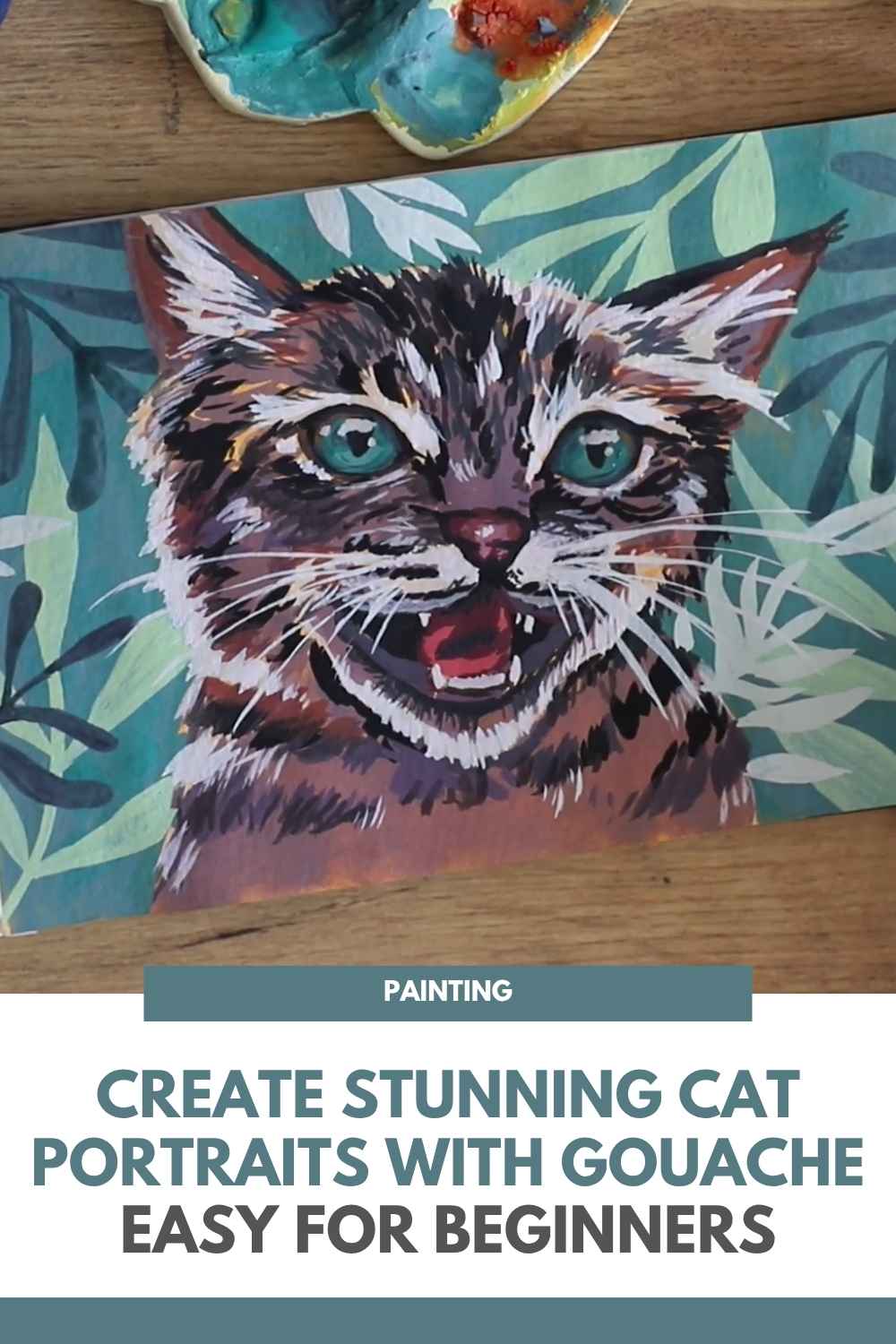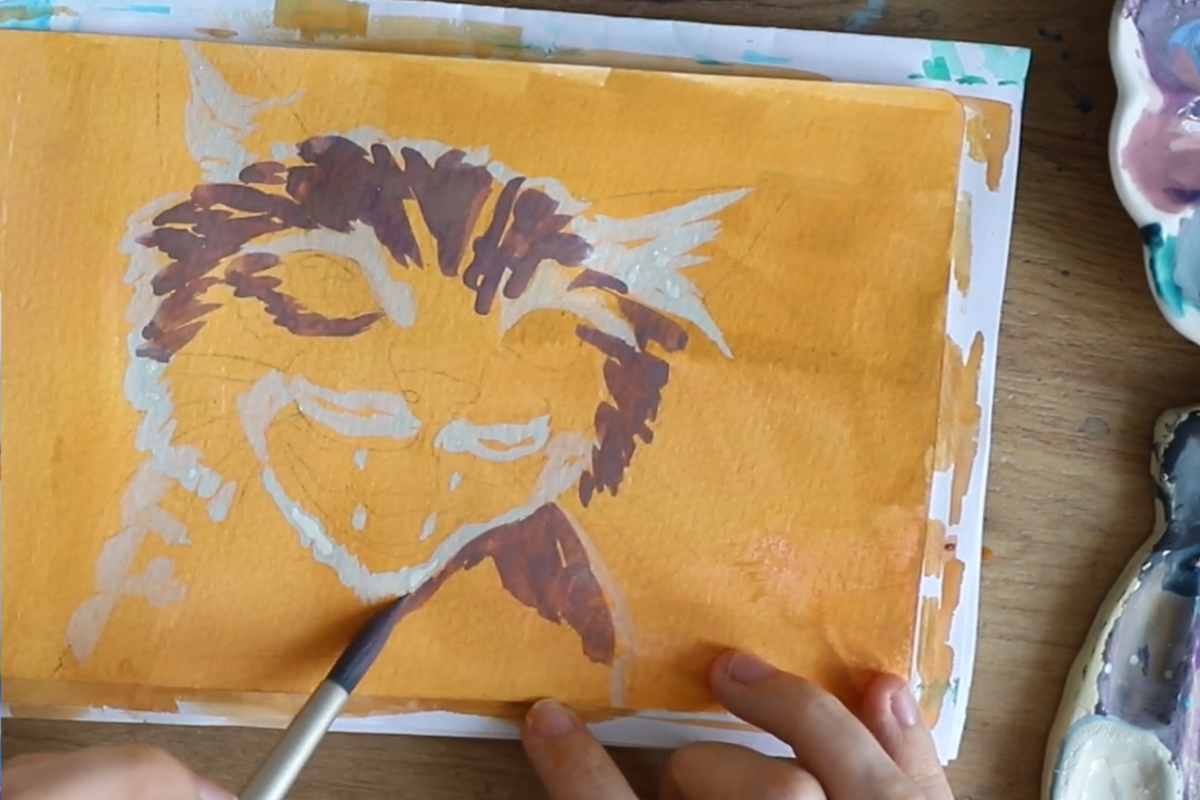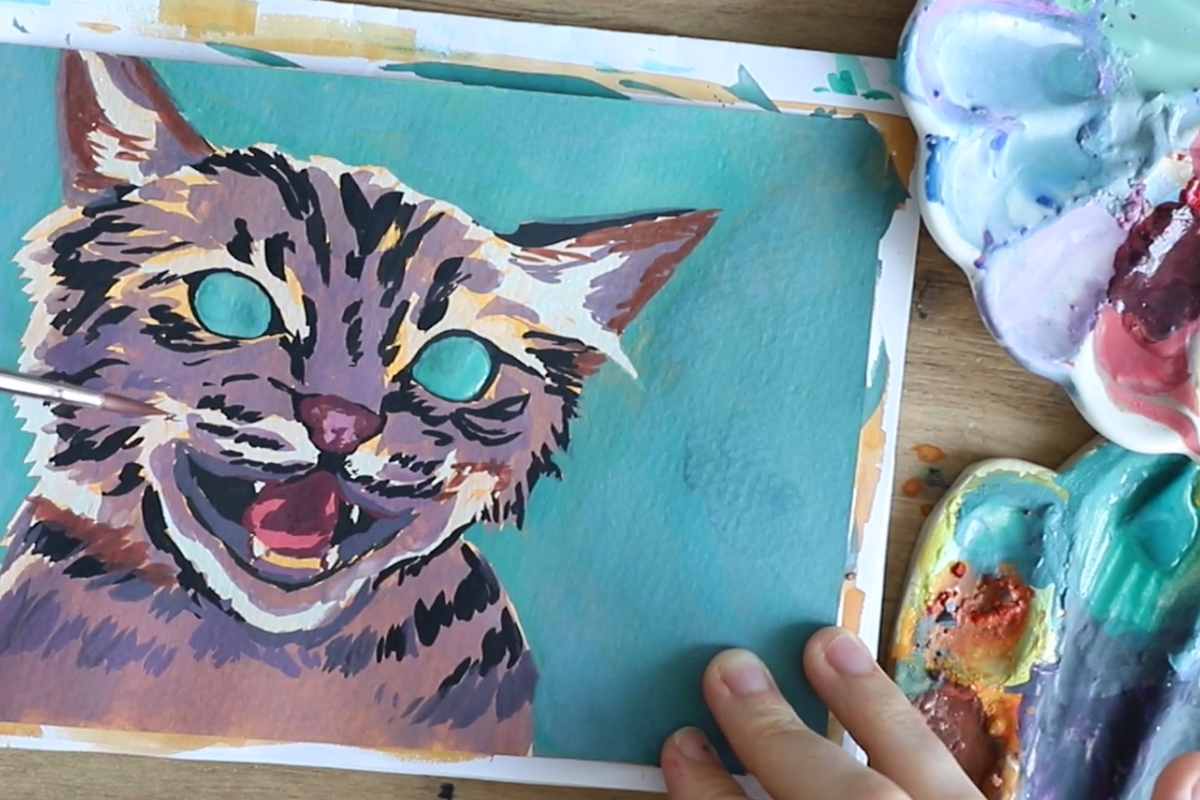Create Stunning Cat Portraits with Gouache: Easy for Beginners

Painting animals, especially cats, can be an exciting and fulfilling artistic endeavor. If you’re looking to learn how to capture the essence of a cat using gouache, you're in for a treat!
Gouache, with its rich pigments and opacity, offers an excellent medium for creating vibrant and dynamic artwork. This guide will take you through the process of painting a cat with gouache, highlighting techniques and tips to ensure your painting stands out.
Why Gouache is Perfect for Painting Cats
Versatility of Gouache
Gouache is a water-based paint that combines the qualities of watercolor and acrylics. It is opaque, unlike watercolor, allowing you to create rich, vibrant layers of color.
This characteristic makes it perfect for painting animals like cats, where details such as fur texture and facial features need to stand out against the background. Additionally, gouache can be reworked even after it has dried, which offers flexibility during the painting process.
For artists who enjoy working with mixed techniques, gouache is ideal. It can be used to create both smooth, flat washes and textured, detailed strokes.
This versatility allows you to paint the softness of the cat’s fur while achieving the vibrancy and depth needed for their expressive eyes and whiskers.
Capturing the Cat's Personality
Cats are often known for their unique personalities, and capturing this in your artwork can make your painting more engaging.
Whether your cat is playful, curious, or relaxed, using gouache to build up layers allows you to highlight these characteristics through color and texture.
The smooth transitions that gouache provides will help you express the softness of the fur, while the use of darker shades will bring out the depth and definition of the cat’s features.
The Importance of the Underpainting
Establishing the Foundations
Starting with an underpainting is one of the most useful techniques in gouache painting. An underpainting allows you to establish the basic structure and values of your subject before applying final layers of color.
This step is especially important when painting animals, as it helps to define the shapes and proportions of the face, ears, and body.
For your cat painting, begin by sketching lightly with pencil or a very diluted gouache to outline the cat’s main features. Focus on placing the eyes, nose, and ears accurately, as these are key components that define the cat’s personality.
By using a monochrome underpainting, you can quickly figure out the general tonal balance, making it easier to build up layers without losing the structure.
Layers for Depth and Dimension
Once the underpainting is complete and dry, you can start adding layers of gouache to bring the painting to life. The beauty of gouache lies in its ability to build up color—by layering various shades of color, you can add depth, dimension, and realism to your cat.
Start with light washes of color and gradually build up darker tones to define the cat’s features, fur, and shadows.
The cat’s face, particularly the eyes, will benefit from layers of fine detailing, where you can slowly add more pigment to bring out the brightness and liveliness of the eyes.
Trusting the Process
Embrace the Imperfection
One of the biggest challenges in painting is the tendency to become frustrated when a painting doesn’t look "perfect" right away.
This is especially true when working with gouache, as it can be easy to get bogged down in the details before the painting is fully developed. However, trusting the process is key to creating a successful artwork.
When painting a cat with gouache, remember that layers take time to develop. You may not see the full picture immediately, but as you continue to add layers and refine your work, the cat will begin to emerge. Don’t rush through the stages—allow the painting to evolve at its own pace.
If you make mistakes or the painting doesn’t turn out as expected initially, don’t be afraid to step back and take a fresh look.
Gouache allows you to correct mistakes easily, so you can always revisit areas that need improvement. Embrace the imperfections, as they often add charm and personality to the artwork.
Keep the Focus on Expression
When painting animals, it’s important to focus on expression rather than rigid realism. Cats have unique faces and features that can easily be exaggerated for artistic effect.
Pay attention to the eyes—they often convey the most emotion in animal portraits. Make sure to highlight the contrast between the whites of the eyes and the pupils, which will help add depth and realism to your painting.
Similarly, the mouth and whiskers can help convey a range of expressions. If your cat is depicted with a playful or surprised look, use light brushstrokes to capture the mouth’s curve or whisker movements.
This is where gouache’s ability to add bold strokes comes in handy, as you can bring attention to these small but significant features.
Tips for Success
Work in Layers
As with any painting, layering is essential when working with gouache. Start with thin washes and gradually build up to more solid layers. This approach helps create smooth transitions and allows you to add intricate details over time.
Focus on Color Relationships
Cats have a wide variety of fur colors, from vibrant oranges to sleek blacks and grays. Pay close attention to the color relationships in your reference image.
Use complementary colors to make the fur stand out, and experiment with layering different hues to replicate the unique textures in the fur.
Be mindful of the shadows and highlights, as these elements give life to your painting and help separate different planes of the cat's face and body.
Don't Forget the Background
While the cat itself is the focal point, the background plays an important role in setting the tone of the painting. A colorful, dynamic background with complementary colors will make the cat's features pop.
For example, the green leaves in your reference image serve to complement the cat's fur tones and provide a natural environment for the animal. Don’t be afraid to get creative with the background—this is your opportunity to experiment and make the painting your own.
Conclusion
Painting a cat with gouache is a fun and rewarding process that allows for creativity, expression, and exploration.
By starting with a strong underpainting, layering colors for depth, and focusing on expressive details, you can create a vibrant and dynamic portrait that captures the personality of your subject.
Remember to trust the process, embrace imperfection, and enjoy the journey as you bring your feline friend to life on the canvas.
With patience and practice, your gouache cat paintings will continue to improve, and you'll gain confidence in your ability to paint animals with this beautiful medium. Happy painting!
We thank Visual Mind for the images.
Enjoy The Video Tutorial

Source: Visual Mind
Did you find this post useful or inspiring? Save THIS PIN to your Art Board on Pinterest! 😊

Last update on 2025-11-19 / Affiliate links / Images from Amazon Product Advertising API




Discover More Artistic Inspiration